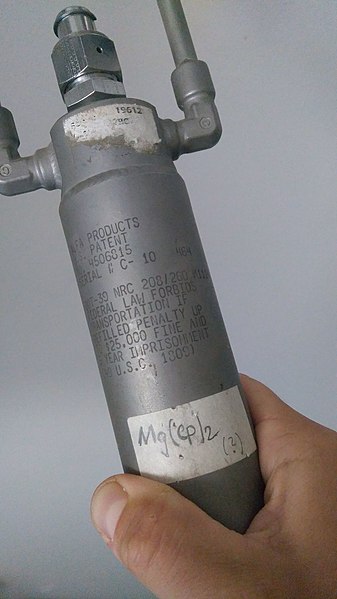In chemistry, electron counting is a formalism for assigning a number of valence electrons to individual atoms in a molecule. It is used for classifying compounds and for explaining or predicting their electronic structure and bonding. Many rules in chemistry rely on electron-counting:Octet rule is used with Lewis structures for main group elements, especially the lighter ones such as carbon, nitrogen, and oxygen,
18-electron rule in inorganic chemistry and organometallic chemistry of transition metals,
Hückel's rule for the π-electrons of aromatic compounds,
Polyhedral skeletal electron pair theory for polyhedral cluster compounds, including transition metals and main group elements and mixtures thereof, such as boranes.
This figure of the water molecule shows how the electrons are distributed with the ionic counting method. The red ones are the oxygen electrons, and the blue ones are electrons from hydrogen. All electrons in the OH bonds belong to the more electronegative oxygen.
The geometry of cis-Dichlorobis(bipyridine)ruthenium(II).
Organometallic chemistry is the study of organometallic compounds, chemical compounds containing at least one chemical bond between a carbon atom of an organic molecule and a metal, including alkali, alkaline earth, and transition metals, and sometimes broadened to include metalloids like boron, silicon, and selenium, as well. Aside from bonds to organyl fragments or molecules, bonds to 'inorganic' carbon, like carbon monoxide, cyanide, or carbide, are generally considered to be organometallic as well. Some related compounds such as transition metal hydrides and metal phosphine complexes are often included in discussions of organometallic compounds, though strictly speaking, they are not necessarily organometallic. The related but distinct term "metalorganic compound" refers to metal-containing compounds lacking direct metal-carbon bonds but which contain organic ligands. Metal β-diketonates, alkoxides, dialkylamides, and metal phosphine complexes are representative members of this class. The field of organometallic chemistry combines aspects of traditional inorganic and organic chemistry.

A steel bottle containing MgCp2 (magnesium bis-cyclopentadienyl), which, like several other organometallic compounds, is pyrophoric in air.
a single crystal of a Mn(II) complex, [BnMIm]4[MnBr4]Br2. Its bright green color originates from spin-forbidden d-d transitions




![a single crystal of a Mn(II) complex, [BnMIm]4[MnBr4]Br2. Its bright green color originates from spin-forbidden d-d transitions](https://upload.wikimedia.org/wikipedia/commons/thumb/9/96/Mn%28II%29_kompleksi_monokoristall.jpg/640px-Mn%28II%29_kompleksi_monokoristall.jpg)